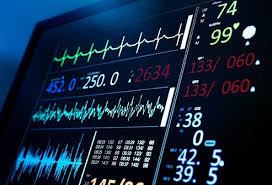TRIADS
Whipple’s Triad
- Symptoms of hypoglycemia in the fasting state
- Hypoglycemia less than 45 mg
- Relief with glucose in insulinomas
Saint’s Triad:
- Diverticulosis
- Gall stones
- Hiatus hernia
Murphy’s Triad: (in appendicitis)
- Pain first
- Vomiting next
- Fever last
Portal hypertension Triad:
- Splenomegaly
- Ascites
- Oesophageal varices
Charcot’s Triad:
- Fluctuating jaundice
- Recurrent pain
- Intermittent fever with rigors
Behcet’s syndrome Triad
- Recurrent oral ulcers
- Genital ulcers
- Relapsing iritis
Pentalogy of Fallot
- Pulmonary stenosis
- Ventricular septal defect
- Overriding of aorta
- Right ventricular
- hypertrophy Atrial septal defect
Tetralogy of Fallot:
- Pulmonary stenosis
- Ventricular septal defect
- Overriding of aorta
- Right ventricular hypertrophy
Trilogy of Fallot: Fallot’s Triad
- Pulmonary stenosis
- Ventricular septal defect
- Overriding of aorta
Acute Compression Triad (Beck’s Triad):
- Rising venous pressure
- Falling arterial pressure and
- Small quiet heart
Achalasia cardia
- LOS does not relax.
- X-ray shows absence of fundal gas shadow.
- Ba meal shows oesophageal dilatation and beak like narrowing (rat tail deformity).
SIGNS
- ALFRED DE MUSSET’S SIGN: Forward and backward jerking of the head or visible movements of the ears, synchronous with the beating of the heart, seen in ear.
- BOA’S SIGN: Hyperaesthesia over right to subscapular area, seen in acute cholecystitis.
- BRUDZINSKI’S NECK SIGN: Flexion of hips and knees and flexion of neck in meningitis.
- CARVALLO’S SIGN: Murmurs of TR & TS accentuated by inspiration.
- CHADDOCK’S SIGN: Extensor plantar response stroking the lateral malleolus.
- GORDON’S SIGN: A Babiniski’s like response on squeezing the calf muscle.
- CHVOSTEK’S SIGN: A light tap over the facial nerve, in front of the ear, in case of latent tetany, results in a sudden contraction of the facial muscles. It can also occur in an appreciable number of normal people.
- INVERTED UMBRELLA SIGN/ FLEISCHMER’S SIGN: Thickening of ileocaecal valve give rise to broad triangular appearance with the base toward caecum in intestinal TB.
MYOCARDIAL INFARCTION
1. ECG change in hyperacute phase: ST elevation
2. In stable angina, enzyme levels are: Normal
3. Enzyme to raise at the earliest: Myoglobin; followed by CK-MB
4. Sensitive marker for MI: Troponin T
CARDIAC TAMPONADE
1. Features:
2. Pulsus paradoxus,
3. Electrical alterans,
4. Raised JVP
5. 'x' descent is prominent
6. Chest X-ray findings: Big globular heart
CONSTRICTIVE PERICARDITIS
1. Right heart failure occurs,
2. Raised JVP,
3. Prominent 'x' descent,
4. Kussmaul sign seen


.jpg)


.jpeg)